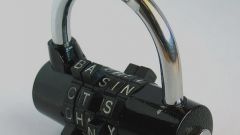Instruction
1
When entering the password usually appears a window with a message that prompts the user to save the password, refuse to save or to recall it later. If this window does not appear, then the auto-save password disabled.
2
For inclusion in Internet Explorer: "Tools" - "Internet options" "Content" "Autocomplete". In the opened window tick the tick the "prompt to save password".
3
When working in Mozilla Firefox open "Tools" - "Settings" - "Protection". In the section "Passwords" check the line "Remember passwords for sites" and "Use a master password".
4
If you use Google Chrome, click the wrench icon, it is immediately after the address bar, then select "Settings" - "Personal". Under "Passwords", check "offer to save passwords".
5
For those who prefer to work in network Opera, open: Tools - General settings - "Forms". Check the line "Enable password management".
6
Despite the convenience of the memory of password, to use it is very cautious. Modern Trojans able to steal passwords from all popular browsers, so you should not keep in this way the passwords on important services such as electronic mailboxes. All important passwords should be entered manually: spending a few seconds, you will greatly hinder the theft of your account information.
7
Possible next version: save in the browser the password was incorrect and different from the present one or two characters. When you log on you will only need to change only these symbols, thus stealing the changed password does not facing you.
8
It is very important to use complex passwords, as many accounts are hacked banal selection. A good password should have a minimum of eight characters, be drawn using different registers and can contain special characters@,$,#, etc.


